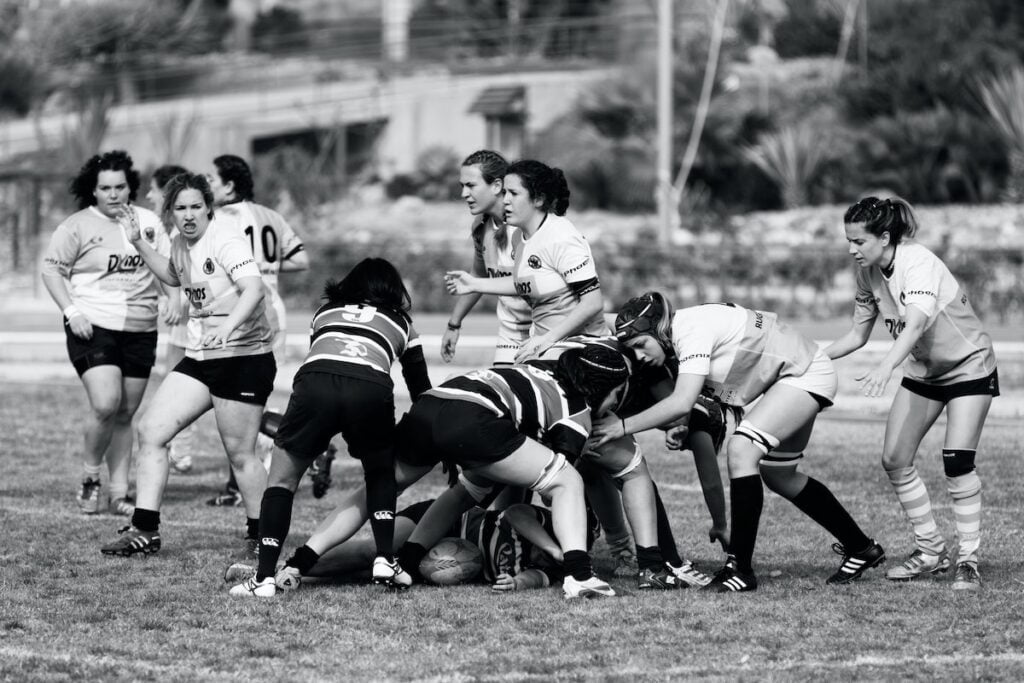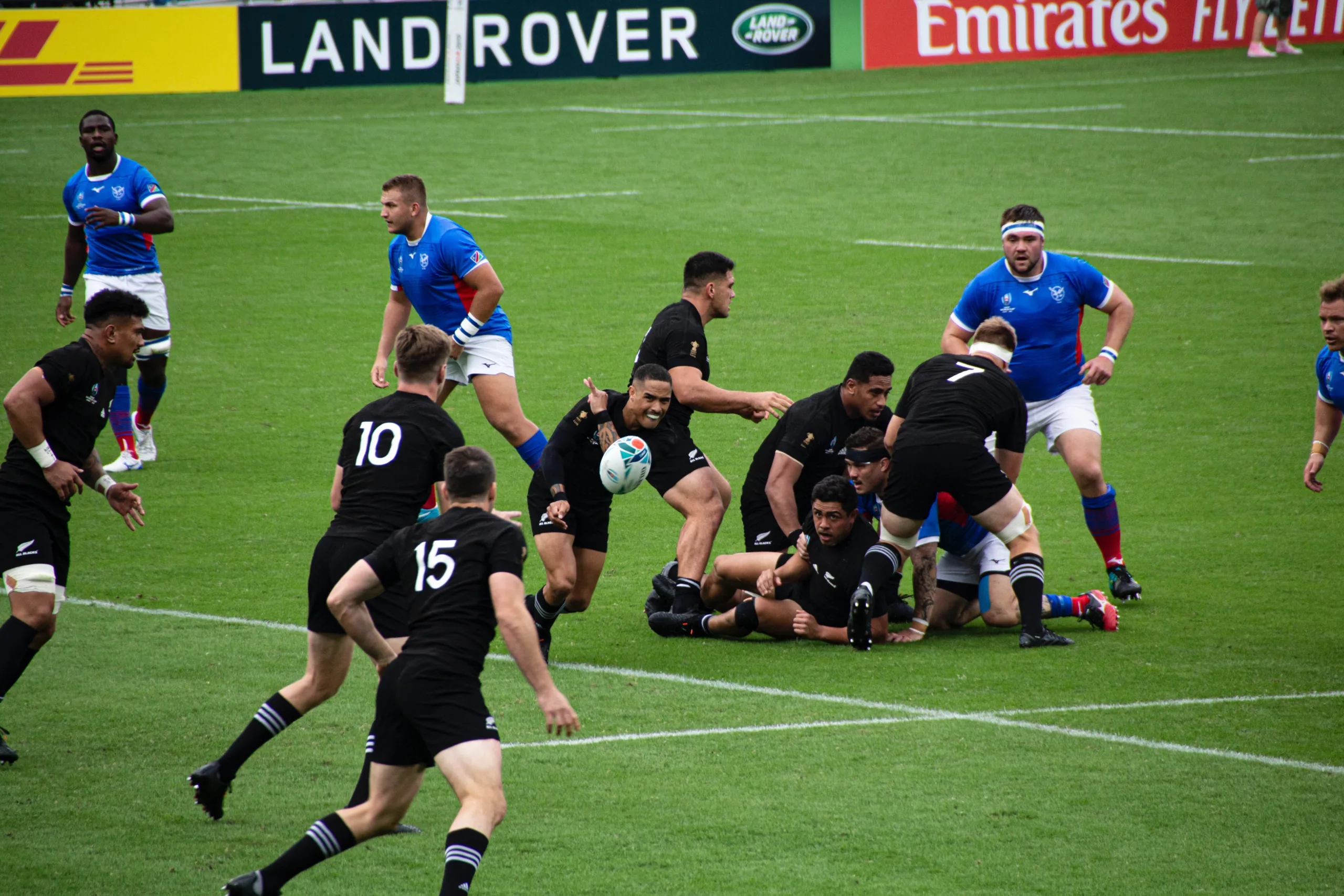The breakdown in rugby refers to the phase of play immediately following a tackle where the players contest for possession of the ball. During the breakdown, the ball is on the ground and players from both teams try to secure it by forming a ruck.
The objective of the breakdown is to secure possession of the ball and allow the players to contest it legally with their feet. The breakdown is a crucial aspect of rugby as it helps maintain the flow of the game and can often determine which team will regain control of the ball and progress up the field. The breakdown can also be a physically demanding and high-intensity part of the game, requiring a combination of strength, technique, and teamwork.
What is a ruck
A ruck in rugby is a phase of play where one or more players from each team, on their feet, close around the ball that is on the ground. The objective of a ruck is to secure possession of the ball and allow the players to contest it legally with their feet. The players involved in the ruck must support their own body weight and cannot handle the ball. Rucking is a key aspect of rugby and helps maintain the flow of the game.

When does a ruck happen
A ruck typically happens in rugby when the ball has gone to ground, either from a tackle, a knock-on, or a player being held up. The players from both teams then contest the ball by forming a ruck around it. In a ruck, the players must support their own body weight and cannot handle the ball. The objective is to secure possession of the ball and progress up the field. The ruck is an important aspect of rugby as it allows the game to continue and helps maintain the flow of play.
Ruck rules
There are several penalties that can occur during a ruck. Some common examples include:
- Not rolling away: If a player fails to roll away from a tackled player and the ball, they can be penalised.
- Not releasing the ball: Players must release the ball and any players in possession of it after a tackle, otherwise they can be penalised.
- Dangerous play: Players must not enter a ruck dangerously, such as by jumping over other players, or they can be penalised.
- Offside: Players must be onside, i.e. behind the hindmost foot of the player in front of them, otherwise they can be penalised.
- Not supporting own body weight: Players must support their own body weight and not collapse the ruck, or they can be penalised.
These penalties can result in a loss of territory or even points, depending on the severity of the infringement.
What is offside in a ruck
In rugby, players who are offside in a ruck are not allowed to participate or influence the play in any way. The offside rule applies to all players on the field, and is designed to promote fairness and open play.
A player is considered offside in a ruck if they are in front of the ball and/or they are not involved in the ruck and they interfere with play. For example, if a player is not involved in the ruck and they try to play the ball or obstruct an opponent, they will be penalised for being offside.
It is important for players to be aware of their position in relation to the ruck and the ball, and to stay onside to avoid being penalised. The offside rule is enforced by the referees, who can award penalties or free-kicks to the opposing team for breaches of the rule. By adhering to the offside rule, players can help ensure a fair and open contest for possession of the ball during a ruck.
Who is involved in a ruck
In a ruck in rugby, the players involved are typically forwards from both teams who are close to the ball on the ground. These players must be on their feet and contest the ball legally with their feet. The players involved in a ruck must support their own body weight and cannot handle the ball. The objective is to secure possession of the ball and progress up the field. In addition to the forwards, other players may also enter a ruck to try to secure the ball or to help support their own team. However, only players who are on their feet and who are supporting their own body weight are considered to be involved in the ruck.
When is a ball considered out of a ruck
a ruck is considered to have ended when the ball has been won and is available for use by either team. This occurs when the ball has been cleared from the ruck and is no longer being contested by players from both teams. At this point, the ball is considered to be “out” of the ruck and is available for the players to play with their hands or feet> generally this happens when the ball has been lifted off the ground by the scrum half
The end of a ruck is usually signaled by the referee, who will say ” the ball is out”. The players then have the opportunity to play the ball and continue the game. The exact moment when a ruck ends can vary, as it depends on a number of factors including the number of players involved, the intensity of the contest for the ball, and the tactical situation of the game. However, once the ball has been won and is available for use, the ruck is considered to have ended.
What is counter rucking
Counter-rucking is a strategy used in rugby to disrupt the opposition’s ruck and win back possession of the ball. It involves one or more players from the defending team actively going into the opposition’s ruck to contest the ball and either force a turnover or slow down their progress up the field. Counter-rucking is a physical and tactical aspect of rugby and requires coordination and timing between the players involved. The objective of counter-rucking is to regain control of the ball and maintain possession for the defending team. It is a key element of rugby defense and can have a significant impact on the outcome of the game.
Essential rucking skills
Rucking is an essential part of rugby and requires a combination of physical and technical skills. Some of the key skills involved in rucking include:
- Footwork: Good footwork is crucial for players to be able to move around the ruck effectively and contest the ball.
- Body positioning: Players must be able to position their bodies in a way that allows them to support their own weight and contest the ball legally.
- Strength: Players must have the strength to physically compete for the ball and push their opponents off it.
- Timing: Good timing is important for players to arrive at the ruck at the right moment and contest the ball effectively.
- Communication: Players must communicate effectively to coordinate their efforts during the ruck.
- Game awareness: Players must be aware of their surroundings and the state of play during a ruck to make effective decisions and contest the ball effectively.
By developing these skills, players can improve their ability to contest the ball during a ruck and help their team secure possession and maintain the flow of the game.
What is jackaling
Jackaling is a rugby term used to describe a specific technique used to win back possession of the ball during a ruck. The jackaler, usually a back-row forward, tries to get to the ball before the opposition’s forwards can secure it and win it back for their own team. The jackaler must be quick and agile to get to the ball first, and also physically strong to compete with the opposition for possession. The objective of jackaling is to disrupt the opposition’s ruck and gain control of the ball, either by forcing a turnover or slowing down their progress up the field. Jackaling is a crucial aspect of rugby defense and requires good teamwork and communication between the players involved.
Who is the best rucker??
There is no definitive answer to who the best rucking players in the world are, as this can change from year to year and is often subjective. However, some of the players who are frequently mentioned as being among the best rucking players in the world include:
- Sam Underhill (England)
- Pieter-Steph du Toit (South Africa)
- Taulupe Faletau (Wales)
- Ardie Savea (New Zealand)
- Michael Hooper (Australia)
In the women’s game, Players like Zoe Aldcroft are leading breakdown forwards.
These players are known for their physical prowess, technical ability, and tactical nous in the ruck, and have established themselves as some of the most effective and influential players in this aspect of the game. However, it’s worth noting that there are many other talented rucking players across the world who could also be considered among the best.

